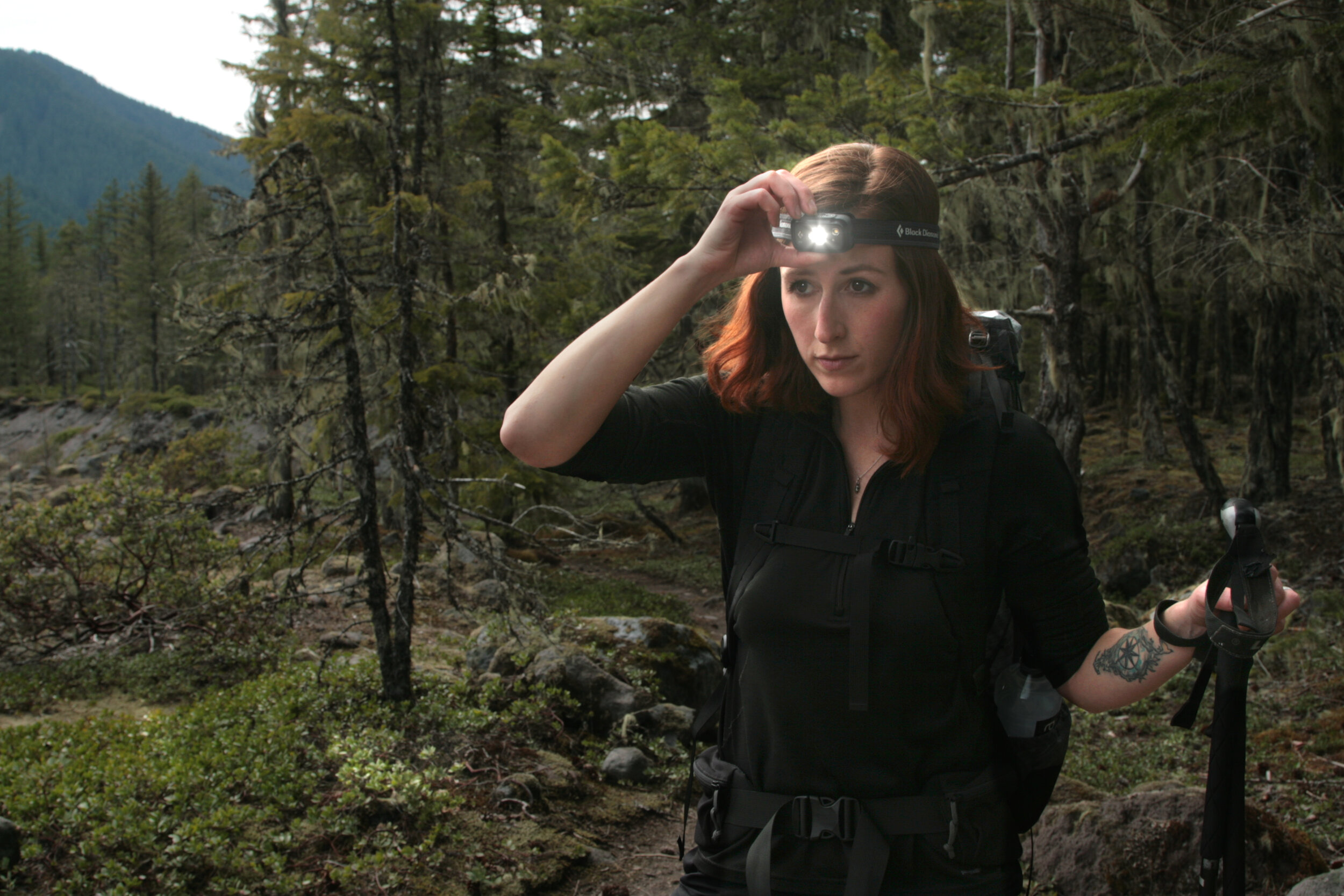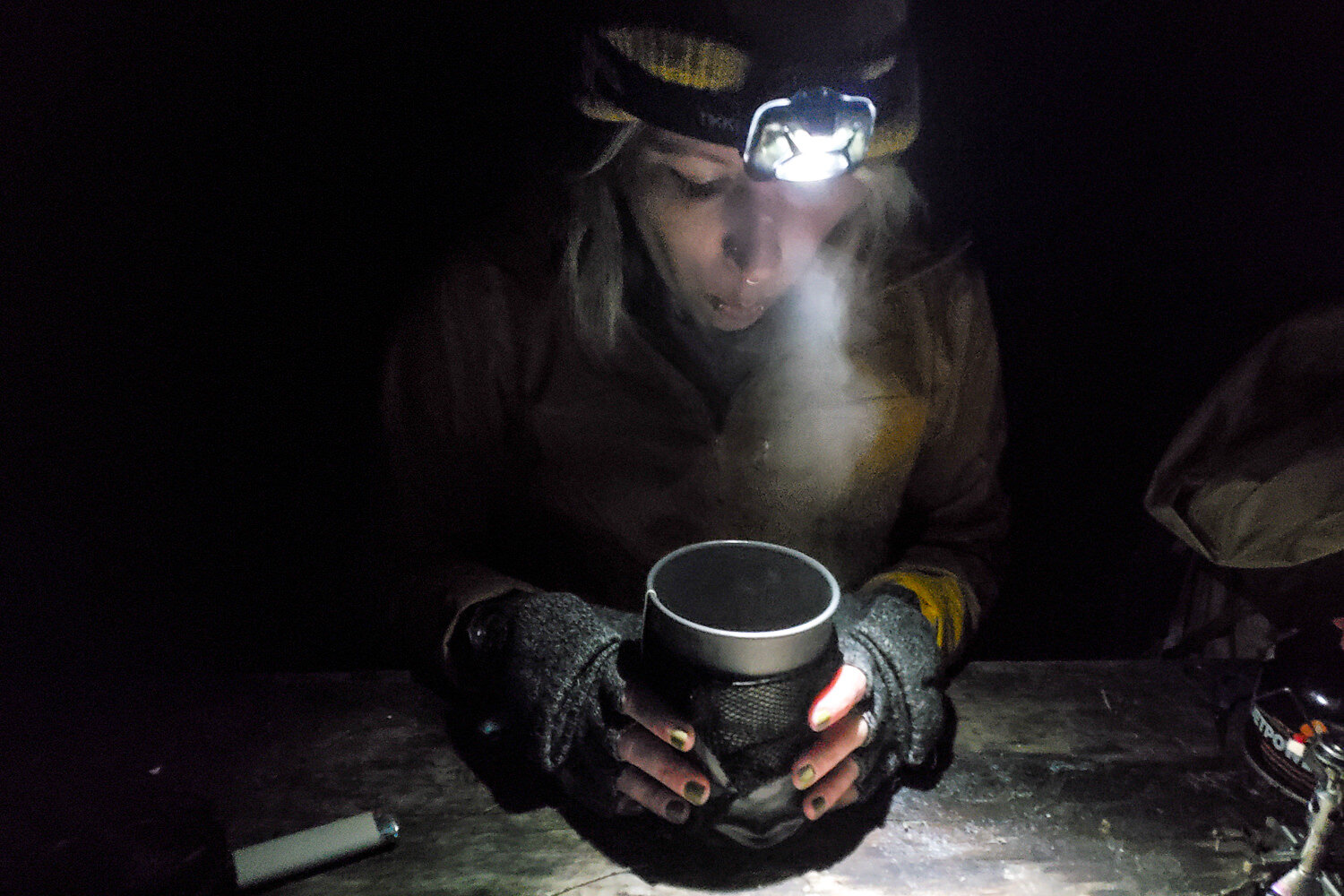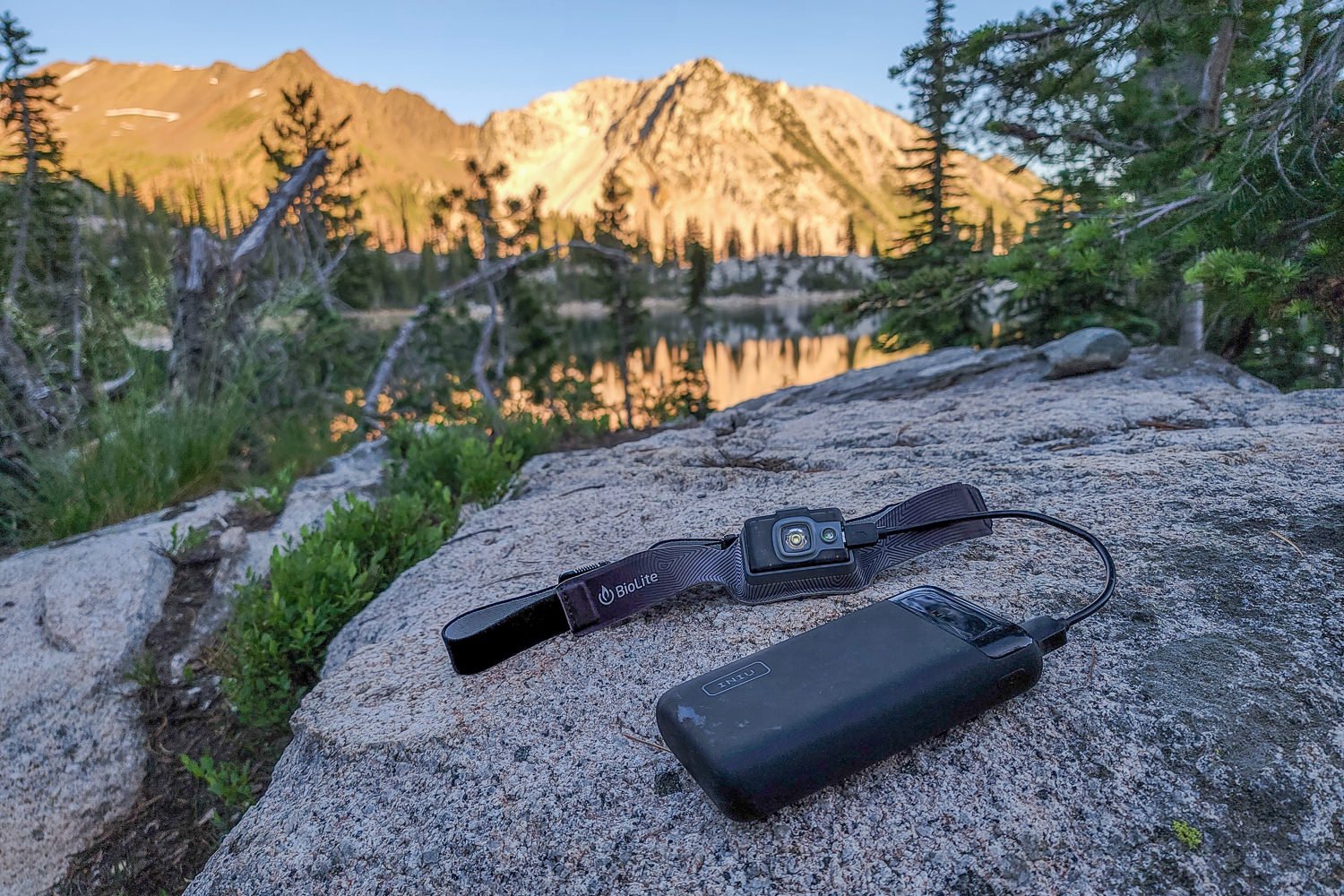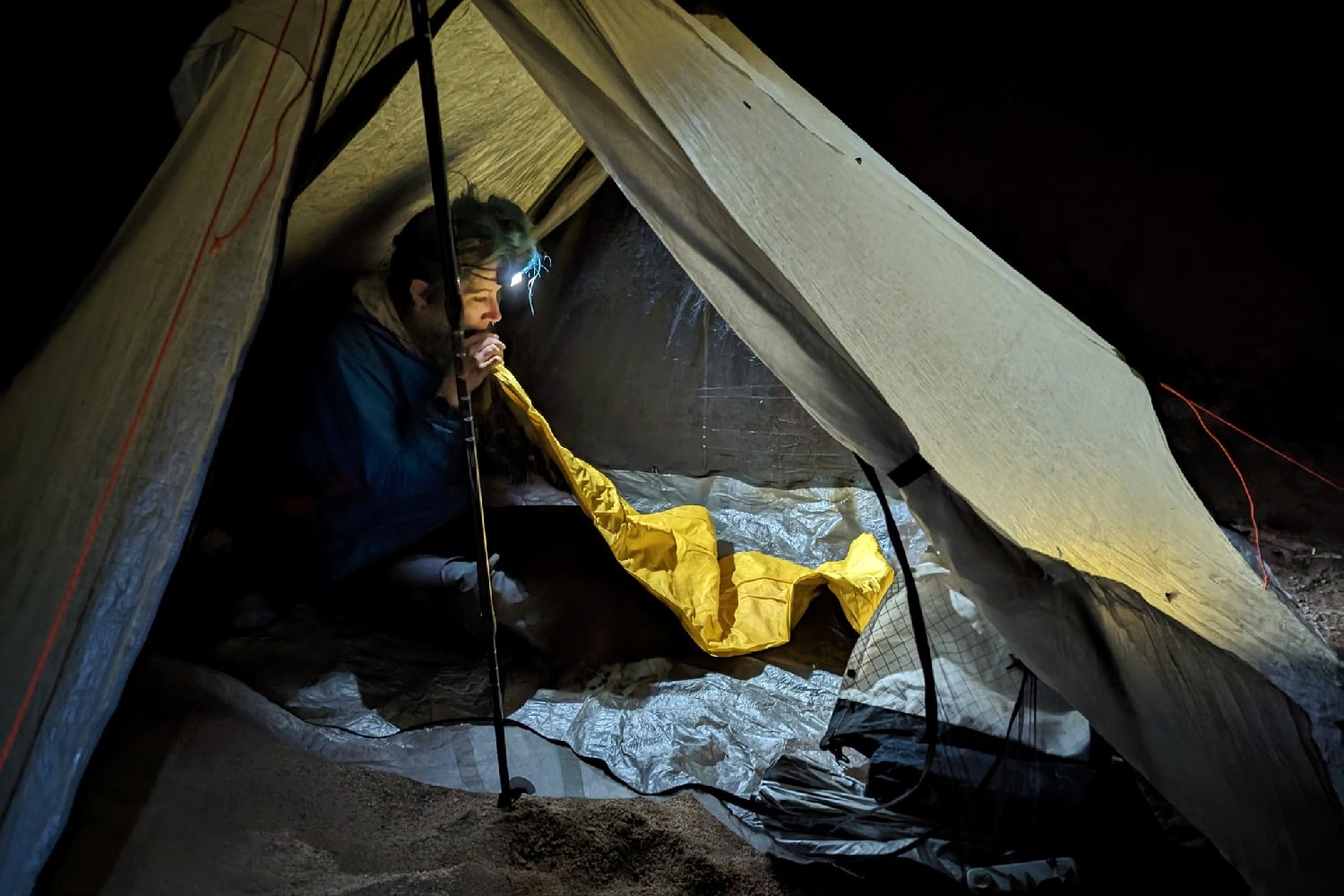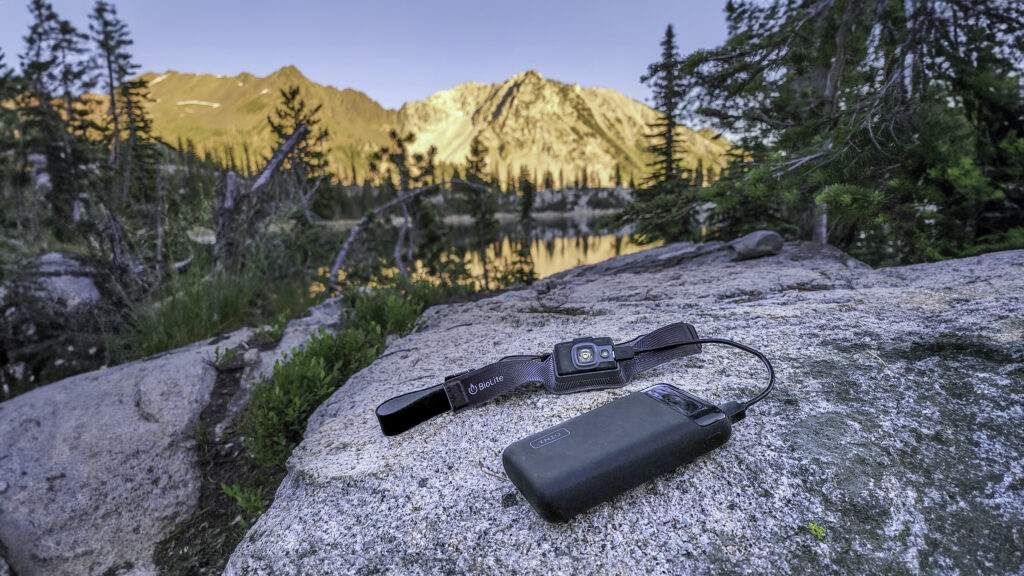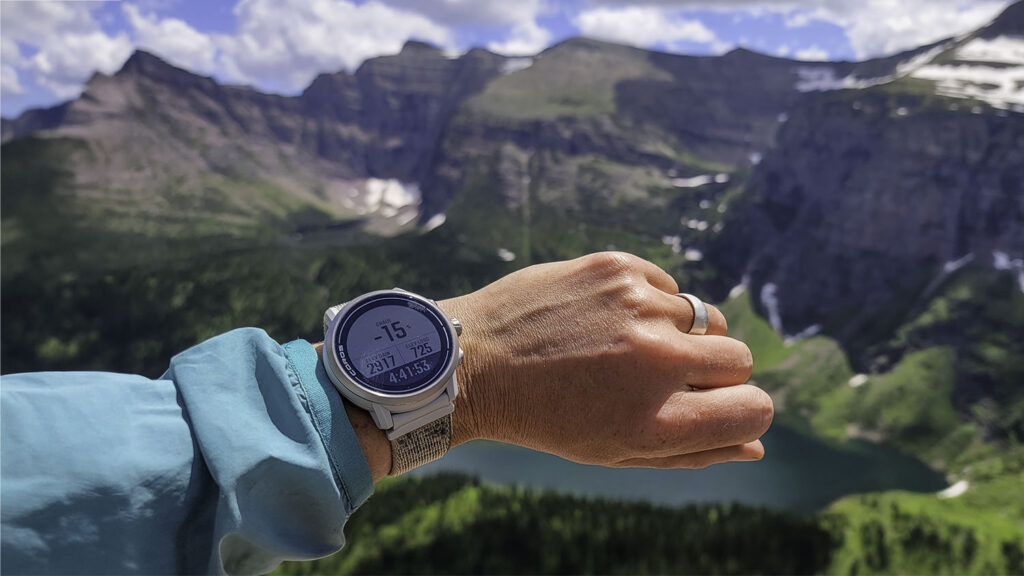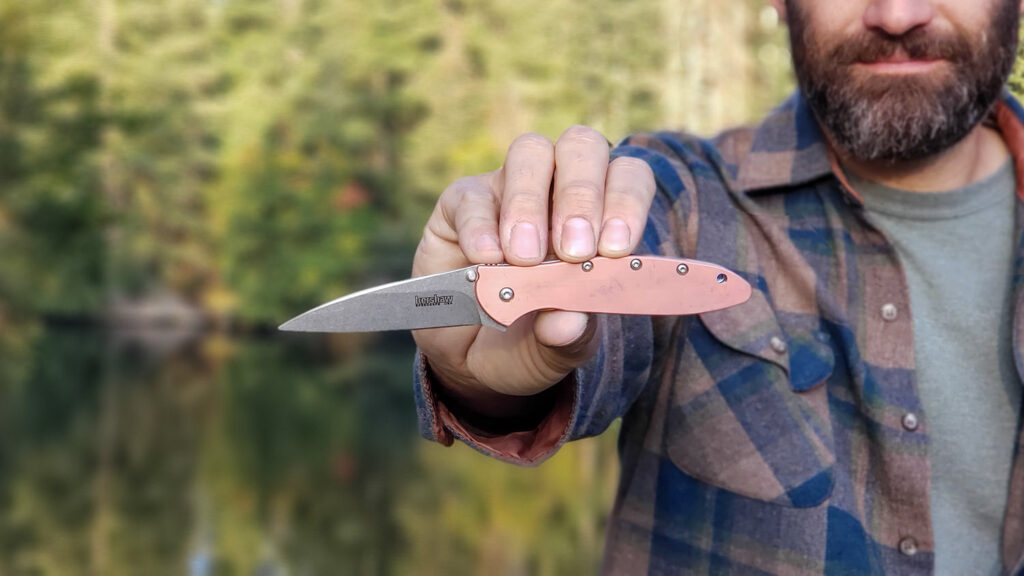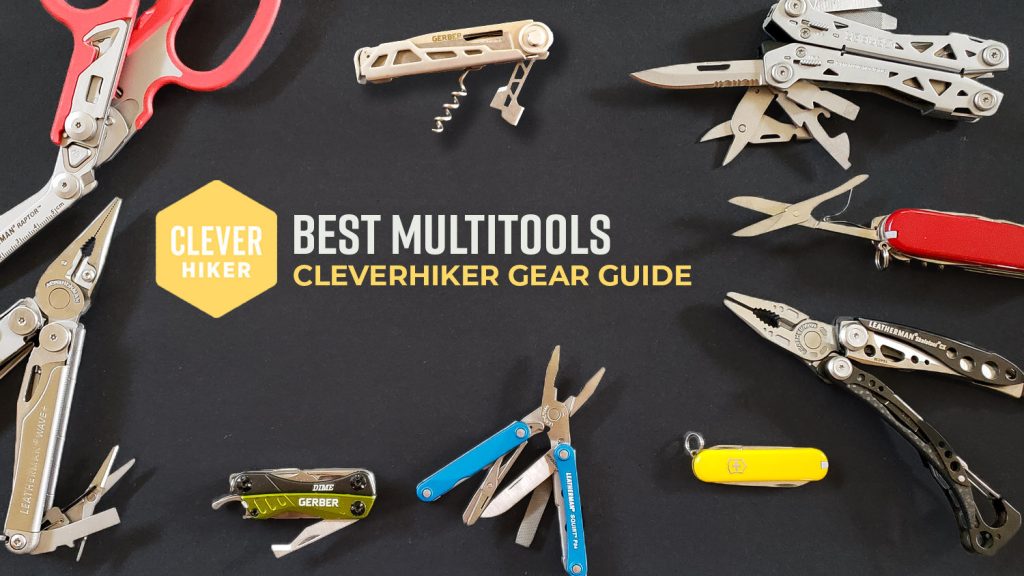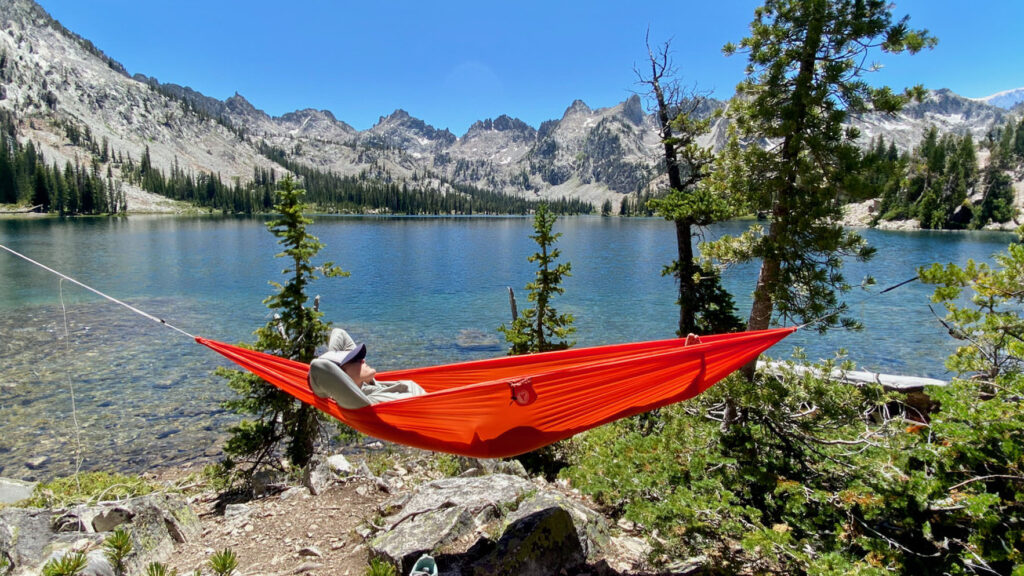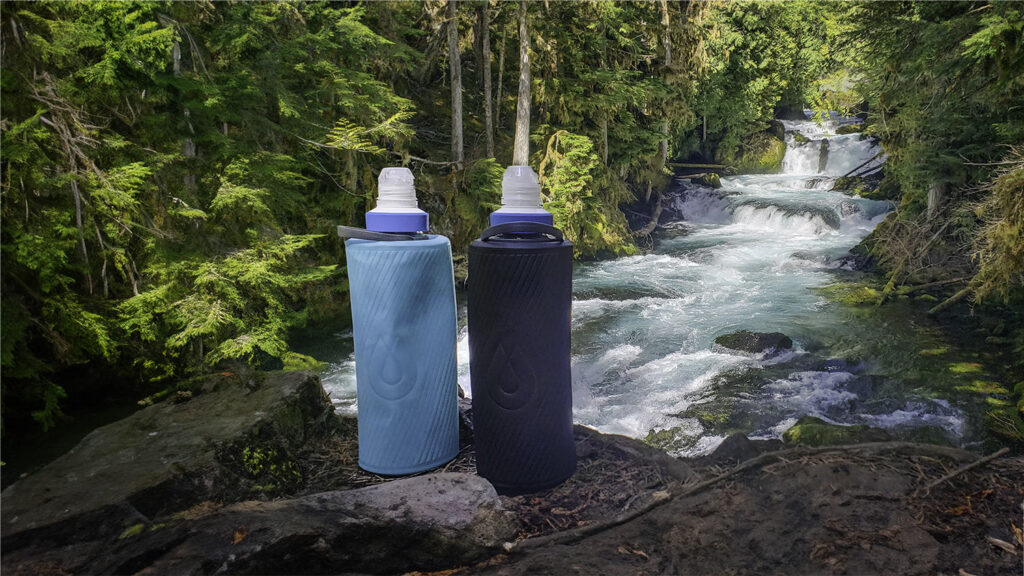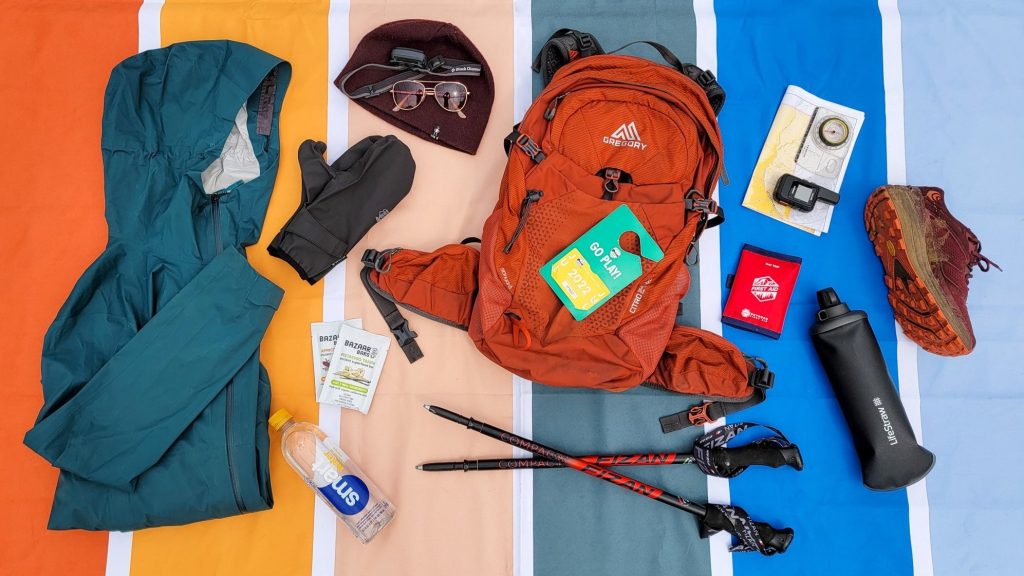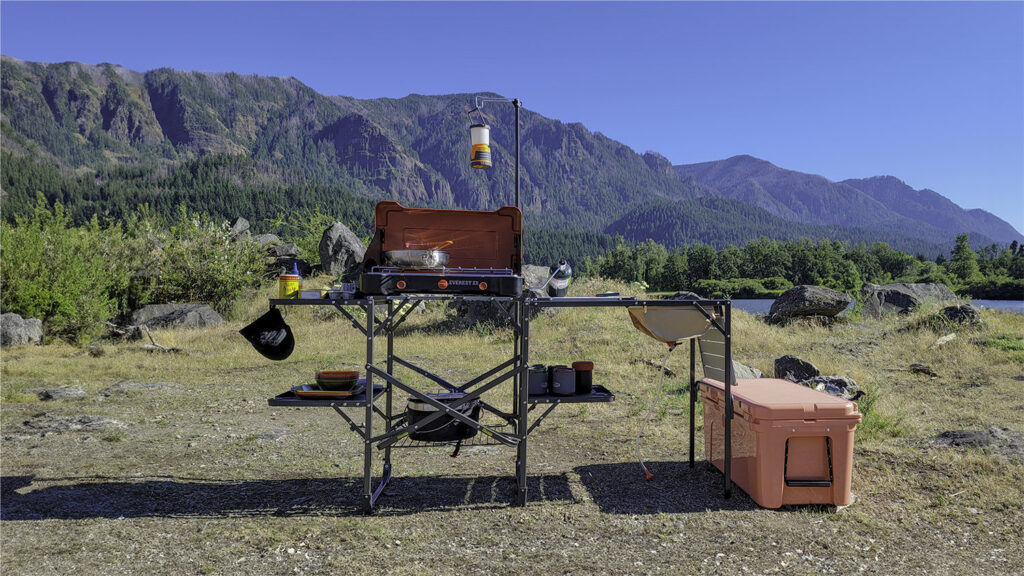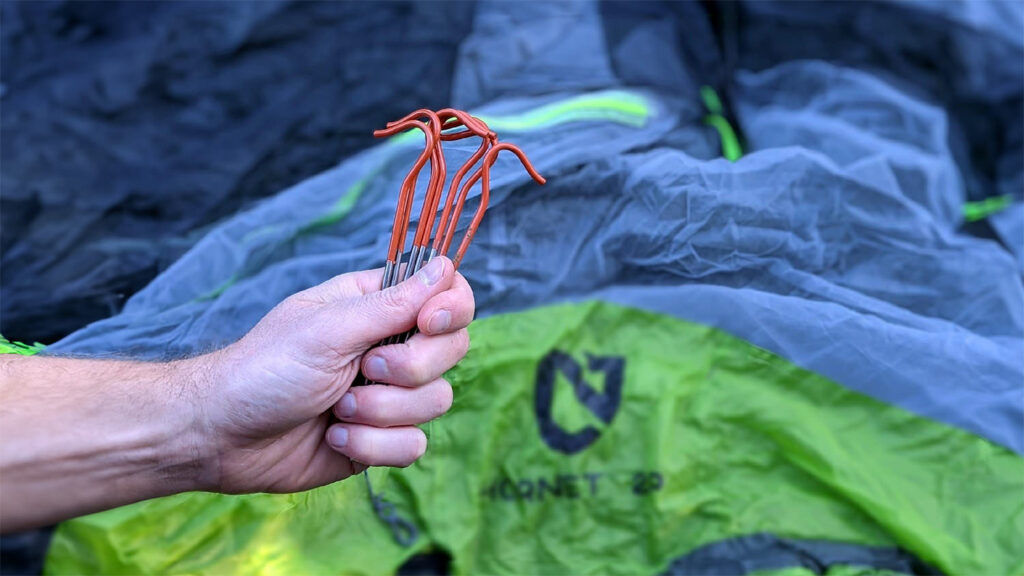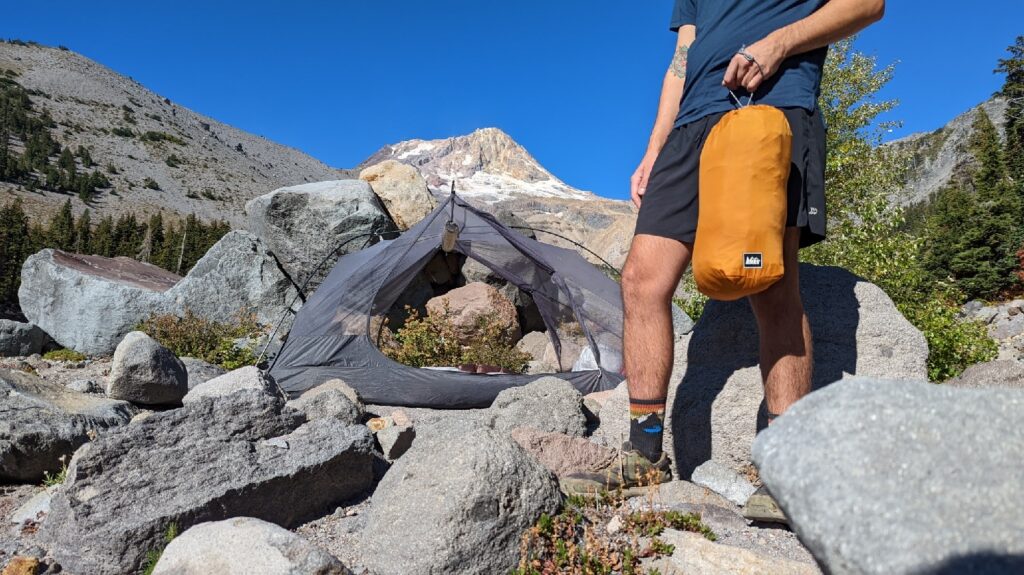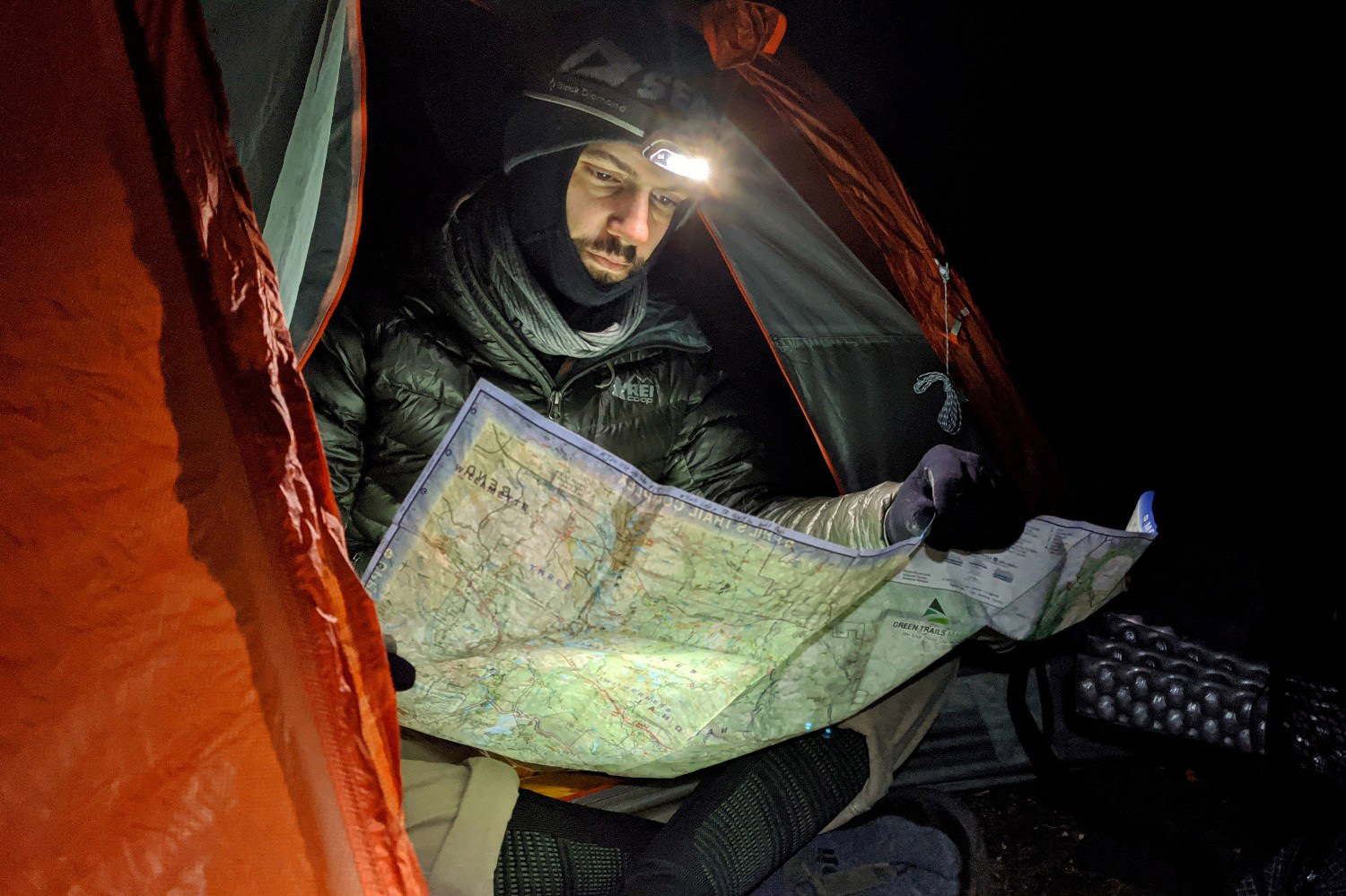
Whether you’re going on a backpacking trip, walking the dog in the evening, or car camping with friends, a hands-free headlamp is an essential tool that everyone should have.
We’ve trail-tested over 40 of the most promising headlamps on long night-hikes, weekend camping trips with the family, and pre-dawn climbs. We’ve seen it all when it comes to headlamp technology, and we’ve used our hands-on experience to narrow down our list of the very best.
If you’re using a rechargeable model, you should definitely take a look at our guide to the best power banks and portable chargers. Headlamps help you see in the dark but if you really need to find your way, we’ve found true north with our top GPS watch picks. And if you’re just into camping gadgets, a reliable multitool is always a good choice.
Quick Picks for Headlamps
Check out this quick list of our favorite headlamps, or continue scrolling to see our full list of the best headlamps with in-depth reviews.
Best headlamp overall: Black Diamond Spot 400-R ($65)
Best rechargeable headlamp runner-up: Petzl Actik CORE ($85)
Best value headlamp: Black Diamond Spot 400 ($50)
Best ultralight headlamp: Nitecore NU25 UL ($37)
Best headlamp for runners & walkers: BioLite HeadLamp 325 ($50)
Best budget headlamp: Petzl Tikkina ($25)
Bright headlamp with good battery life: Petzl Actik ($60)
Headlamp that performs well in the cold: Fenix HM50R V2.0 ($60)
What’s new
Headlamp makers are in something of an arms race to come out with the brightest and longest lasting headlamp, and we’re here for it. We’ve been testing all the latest models of our long-time favorites against some new industry innovations:
- The rechargeable Black Diamond Spot 400-R takes our number one spot for its long battery life, brightness, and low weight.
- The supremely bright Petzl Actik CORE sits at a very close second behind the BD Spot 400-R.
- The Nitecore NU25 UL takes over the title of best ultralight headlamp.
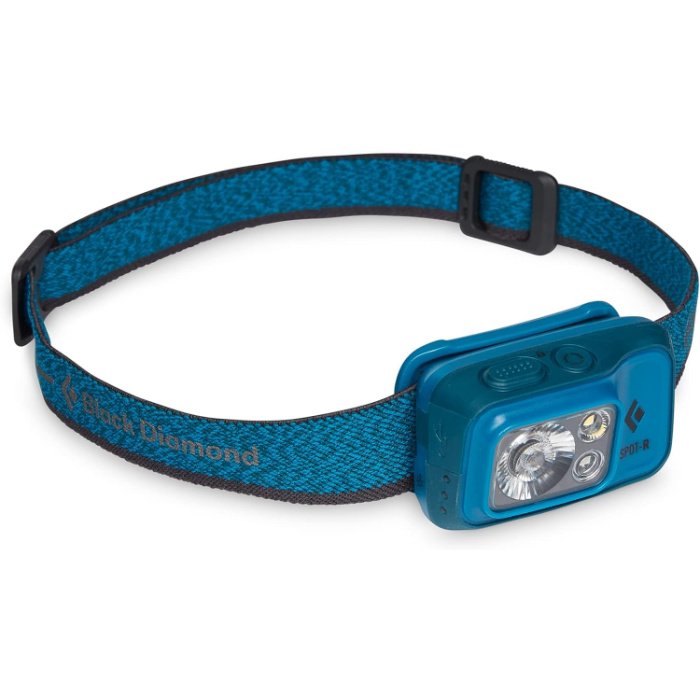
Black Diamond Spot 400-R
Best headlamp overall
Price: $65
Weight: 2.6 oz.
Max Lumens/Beam Distance: 400 lm./328 ft. (100 m.)
Burn Time Low/High: 225 hrs./4 hrs.
Pros
- Rechargeable
- Bright
- Comfortable
- Lightweight
- Longer burn time than other rechargeables
- Easy to use
- Locking feature
- Battery meter
Cons
- Shorter burn time than non-rechargeables
The Black Diamond Spot 400-R is an incredible value – it costs less, weighs less, and has a longer runtime than a lot of the leading rechargeable headlamp competition. It’s also fully waterproof instead of just water-resistant like most others. And the Spot-R gives you the option to use several different beam types at any brightness you choose between 6 and 400 lumens.
With traditional batteries, you never really know how much charge your batteries have left on them if you’re not changing them before every trip. This is one of the main reasons we love rechargeable headlamps – we always know we’re heading into the backcountry with a full charge.
The Petzl Actik CORE has held down our number one spot (and the title of Best Rechargeable Headlamp) for years, but we couldn’t deny the superior weight, battery life, and price of the Spot 400-R. It should be noted that the Petzl Actik CORE is 600 lumens on its highest setting, while the Spot is 400. However, we have always found that 400 (and really even 300) is plenty bright for tasks around camp and night hiking.
While the slightly higher initial cost may be hard for some to justify, the Spot 400-R – or any rechargeable headlamp for that matter – will quickly pay for itself since you aren’t having to constantly buy and carry extra batteries.
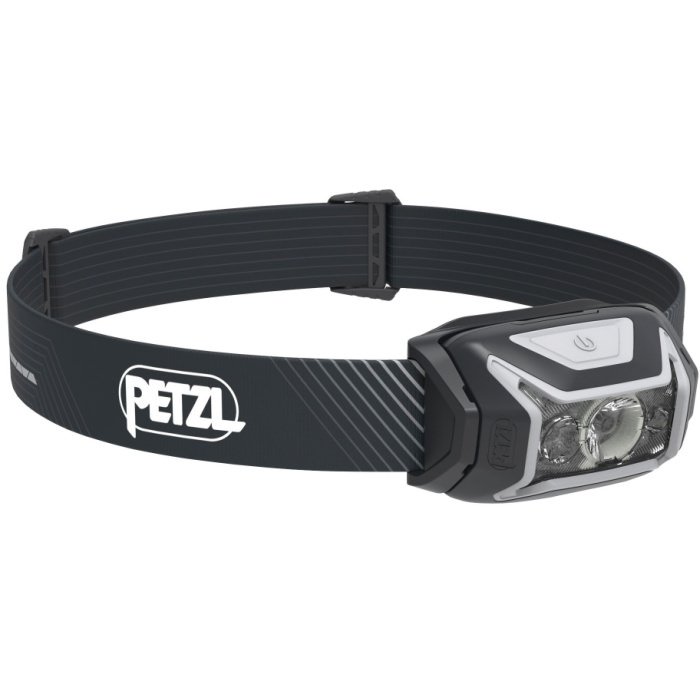
Petzl Actik CORE
Best rechargeable headlamp runner-up
Price: $85
Weight: 3.1 oz.
Max Lumens/Beam Distance: 600 lm./377 ft. (115 m.)
Burn Time Low/High: 100 hrs./2 hrs.
Pros
- Rechargeable
- Bright
- Comfortable
- Performance lighting (doesn’t dim as battery depletes)
- Easy to use
- Locking feature
- Battery meter
Cons
- Expensive
- Not fully waterproof
The Petzl Actik CORE is a user-friendly headlamp with the Petzl dependability we’ve grown to know and love. The Actik CORE is more expensive than the standard Actik (it’s AAA-powered bro), but it weighs a tad less and burns over 100 lumens brighter on its max setting. While both models have the option to use longer-lasting AAAs or the rechargeable CORE battery pack, the Actik CORE model includes the rechargeable battery. Both models are super easy to operate and emit a quality beam that’s a combination of spot and flood light. If you’re looking for a trustworthy rechargeable headlamp the Petzl Actik CORE is an excellent choice.
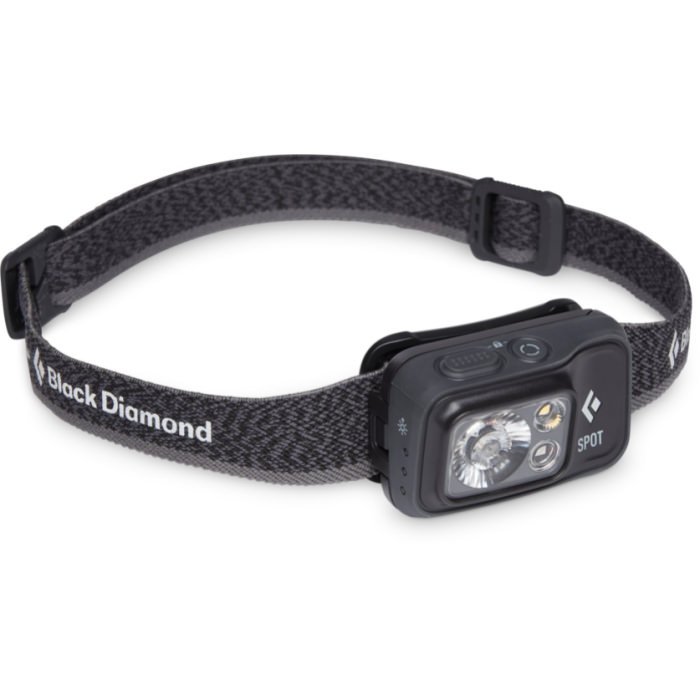
Black Diamond Spot 400
Best value headlamp
Price: $50
Weight: 2.7 oz.
Max Lumens/Beam Distance: 400 lm./328 ft. (100 m.)
Burn Time Low/High: 200 hrs./2.5 hrs
Pros
- Excellent value
- Long burn time
- Bright
- Comfortable
- Waterproof
- Battery mete
- Locking feature
Cons
- Slight learning curve for the different modes
The Black Diamond Spot has been a favorite among hikers for years because it’s exceptionally high quality for the price and packed with convenient features. The newest model is even brighter than before and can run on either regular AAAs or a rechargeable battery (sold separately). You can also get the rechargeable version, the 400-R, for about $15 more. Both models are sleek, comfortable, and stay bright for a long time. Black Diamond headlamps do take a bit more time to learn than many other models, but that’s to be expected for a light with so many features and modes. Check out our full review here.
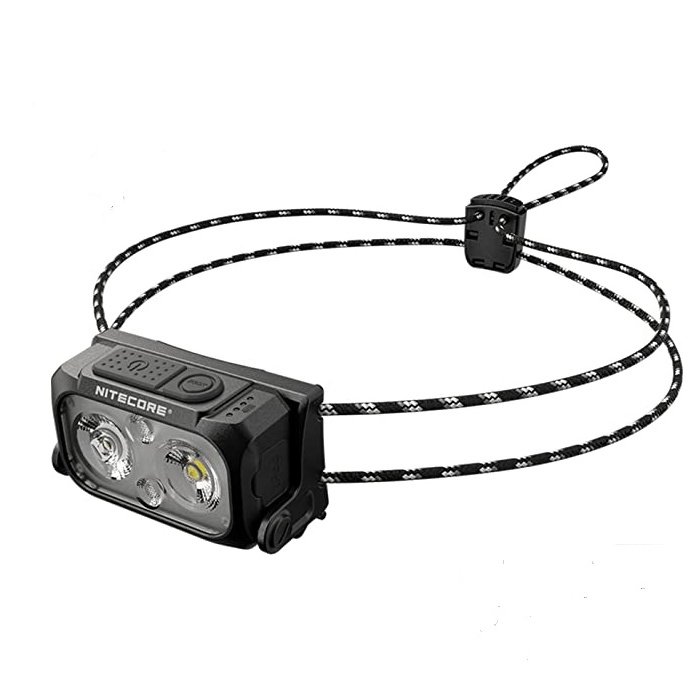
NITECORE NU25 UL
Best ultralight headlamp
Price: $37
Weight: 1.6 oz.
Max Lumens/Beam Distance: 400 lm./210 ft. (64 m.)
Burn Time Low/High: 10.4 hrs./2.7 hrs
Pros
- Ultralight
- Compact
- Affordable
- Rechargeable
- Waterproof
- Battery meter
- Locking feature
- Charges quickly
- Comfy head strap
Cons
- Not as durable as some
The incredibly lightweight NITECORE NU 25 UL has a lot of really useful features in an affordable package. This 400 lm. headlamp is plenty bright for night-hiking or tasks around camp, and the headband is comfortable to wear for long periods. We love that the battery indicator turns on without needing to cycle the light on like most other headlamps. And it’s a real bonus that it charges quickly using a USB-C cord, since most phones are moving away from the micro-USB that most other headlamps charge with. For shorter backpacking trips or home use, the NU 25 UL is an excellent, budget-friendly, ultralight option.
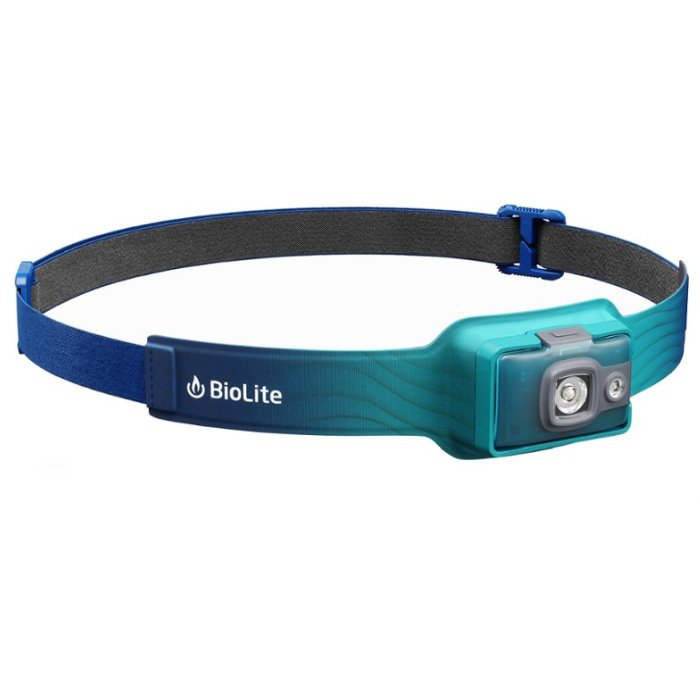
BioLite HeadLamp 325
Best headlamp for runners & walkers
Price: $50
Weight: 1.8 oz
Max Lumens/Beam Distance: 325 lm./246 ft. (75 m.)
Burn Time Low/High: 40 hrs./3 hrs.
Pros
- Ultralight
- Compact
- Rechargeable
- Comfortable
- Locking feature
- Battery meter
Cons
- Short burn time
- Not fully waterproof
- Small on/off button
The BioLite HeadLamp 325 is the most comfortable headlamp on the market with its smooth headband and ergonomic design that sits flush on the forehead. It’s our top choice for activities like running, since it’s ultralight and doesn’t bounce or slip on impact. The burn time of this rechargeable headlamp is relatively short, so it’s best suited for evening walks or shorter outings close to home. But if you don’t spend much time using a light at night or you carry a power bank, it could still be used for multi-night trips. If you’re looking for more power, BioLite’s 425 is a bit brighter and has a longer burn time with a small battery pack at the back of the head.
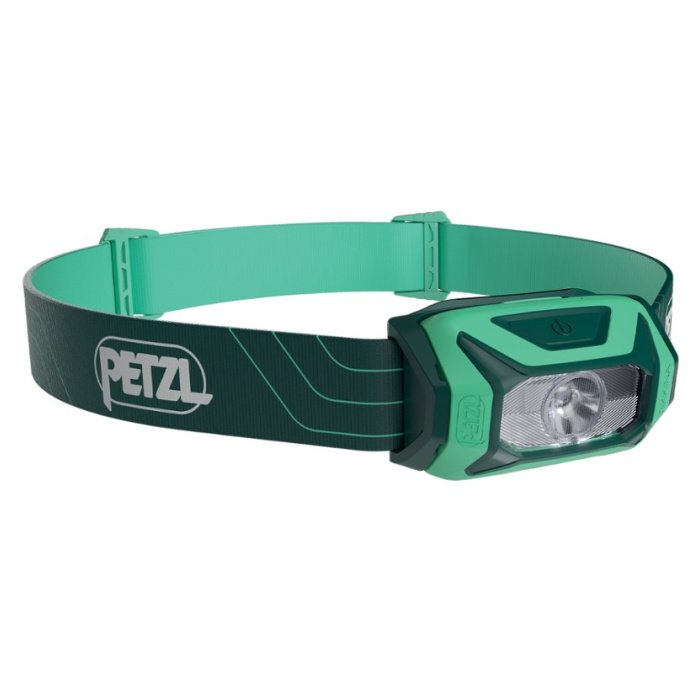
Petzl Tikkina
Best budget headlamp
Price: $25
Weight: 3.2 oz.
Max Lumens/Beam Distance: 300 lm./213 ft. (65 m.)
Burn Time Low/High: 100 hrs./2 hrs.
Pros
- Affordable
- Long burn time
- Easy to use
- Rechargeable battery option
- Battery meter
Cons
- No red mode or strobe
- Not fully waterproof
- No locking feature
The Petzl Tikkina is a simple, long-lasting option for an unbeatable price. If you just need a headlamp to meet basic needs, this is your guy. Petzl designed the no-frills Tikkina to be easy to use, with very little learning curve or special features. Press the button once for low, twice for medium, or three times for high, and that’s pretty much it. The Tikkina takes three AAAs or you can buy a rechargeable CORE battery for about $30. For its price and functionality, this is a perfectly good choice for hiking, working around the house, keeping in your car, or pretty much whatever.
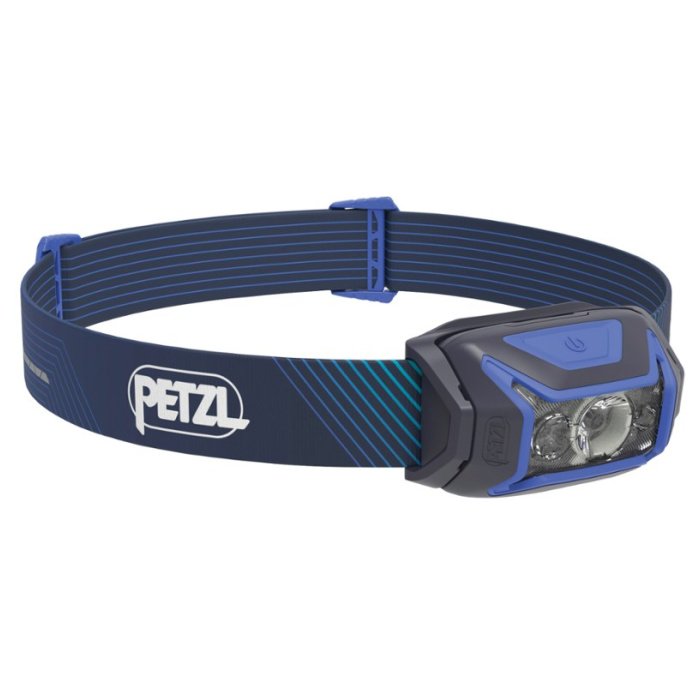
Petzl Actik
Bright headlamp with good battery life
Price: $60
Weight: 3.5 oz
Max Lumens/Beam Distance: 450 lm./328 ft. (100 m.)
Burn Time Low/High: 100 hrs./2 hrs.
Pros
- Bright
- Long burn time
- Performance lighting (doesn’t dim as battery depletes)
- Easy to use
- Rechargeable battery option
- Locking feature
- Battery meter
Cons
- Not fully waterproof
The Petzl Actik is an all-around strong headlamp. It’s most attractive qualities are its ease of use, unique hybrid-energy option, performance lighting, and long burn time. It runs on either three long-lasting lithium AAAs or a rechargeable CORE battery (not included). That said, if you’re planning to use the rechargeable CORE battery, it probably makes sense to pick up the Actik CORE model listed above to save a bit of money. This model is better for those who plan to go the non-rechargeable route in order to get longer burn times. Both Actik models are dependable, high quality, and easy to use.
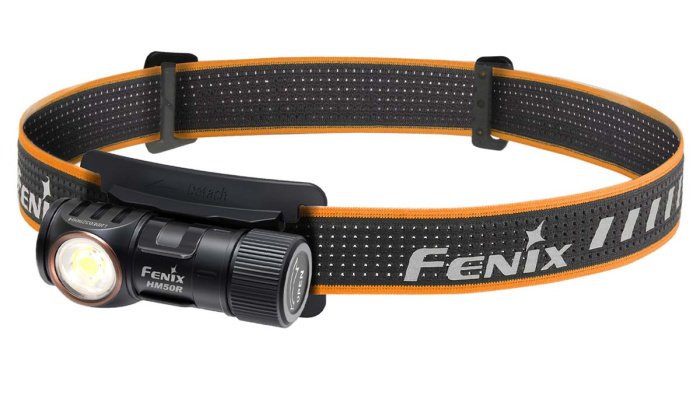
Fenix HM50R V2.0
Headlamp that performs well in the cold
Price: $60
Weight: 2.8 oz.
Max Lumens/Beam Distance: 700 lm./377 ft. (86 m.)
Burn Time Low/High: 42 hrs./3 hrs.
Pros
- Performs well in cold conditions
- Rechargeable option
- Bright
- Durable metal housing
- Waterproof (IP68)
- Battery meter
Cons
- Expensive
- Short burn time
- Uses uncommon batteries
- Slight learning curve for the different modes
- No locking feature
If mountaineering or alpine climbing is your game, you’ll probably appreciate the features of the Fenix HM50R V2.0. This headlamp has a large side-button that’s easy to press while wearing gloves, so it’s a great choice for chilly trips. The HM50R comes with a rechargeable battery for everyday use, but accepts CR123A batteries that perform in extremely low temperatures. For most people, the Fenix HM50R would be overkill, but this torch has a quality build that will withstand hardcore, foul weather adventures.
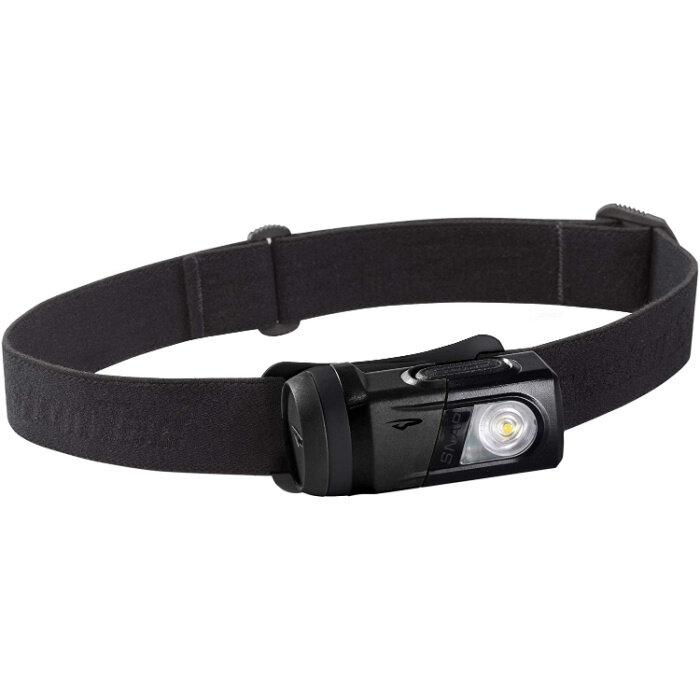
Princeton Tec Snap RGB
Versatile headlamp with multiple mounts
Price: $50
Weight: 3.5 oz
Max Lumens/Beam Distance: 300 lm./164 ft. (50 m.)
Burn Time Low/High: 155 hrs./10 hrs
Pros
- Comes with multiple mounts: headlamp, hanging lantern, handlebars
- Magnet
- Long burn time
- Easy to use
Cons
- Max output is dimmer than some others
- Not fully waterproof
- No red mode
- No locking feature
- Bukly on forehead
The Princeton Tec Snap RGB is a great choice for those who want one light to cover many different activities. It comes with a headband, a 2-way carabiner housing for hanging it like a lantern, and a bike handlebar mount. We like the idea that the mounts can be left where they belong (on your bike, in your tent, in your pack), and the light can easily be popped into place when you need it. Another handy feature of the Snap is that it can be stuck on metal surfaces with its magnetic end, which we found particularly useful when working on household projects. While it’s a little bulky and heavy, we still think the Snap is a fun hands-free light that can move with you from activity to activity.
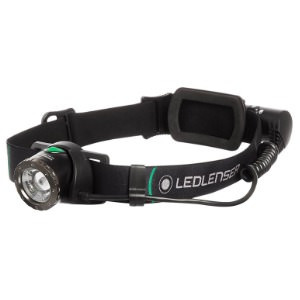
Ledlenser MH10
Bright & powerful headlamp
Price: $90
Weight: 5.6 oz.
Max Lumens/Beam Distance: 600 lm./492 ft. (150 m.)
Burn Time Low/High: 120 hrs./10 hrs.
Pros
- Very bright
- Rechargeable
- Easy to use
- Long burn time for rechargeable battery
Cons
- Expersive
- Heavy
- Bulky
- Not fully waterproof
- No red mode or strobe
- No locking feature
The Ledlenser MH10 is the bulkiest of all the headlamps we tested with a large battery at the back of the head. The battery pack makes it a powerful choice for activities like caving or night hiking where beam distance matters. We like that its functions are simple and straightforward (like a ring adjustment that narrows & widens the beam), the beam is one of the brightest we tested, and among rechargeable headlamps, it has a long burn time. The Ledlenser is great for a lot of things, but it’s not our go-to for backpacking since it’s a bit heavy and bulky.
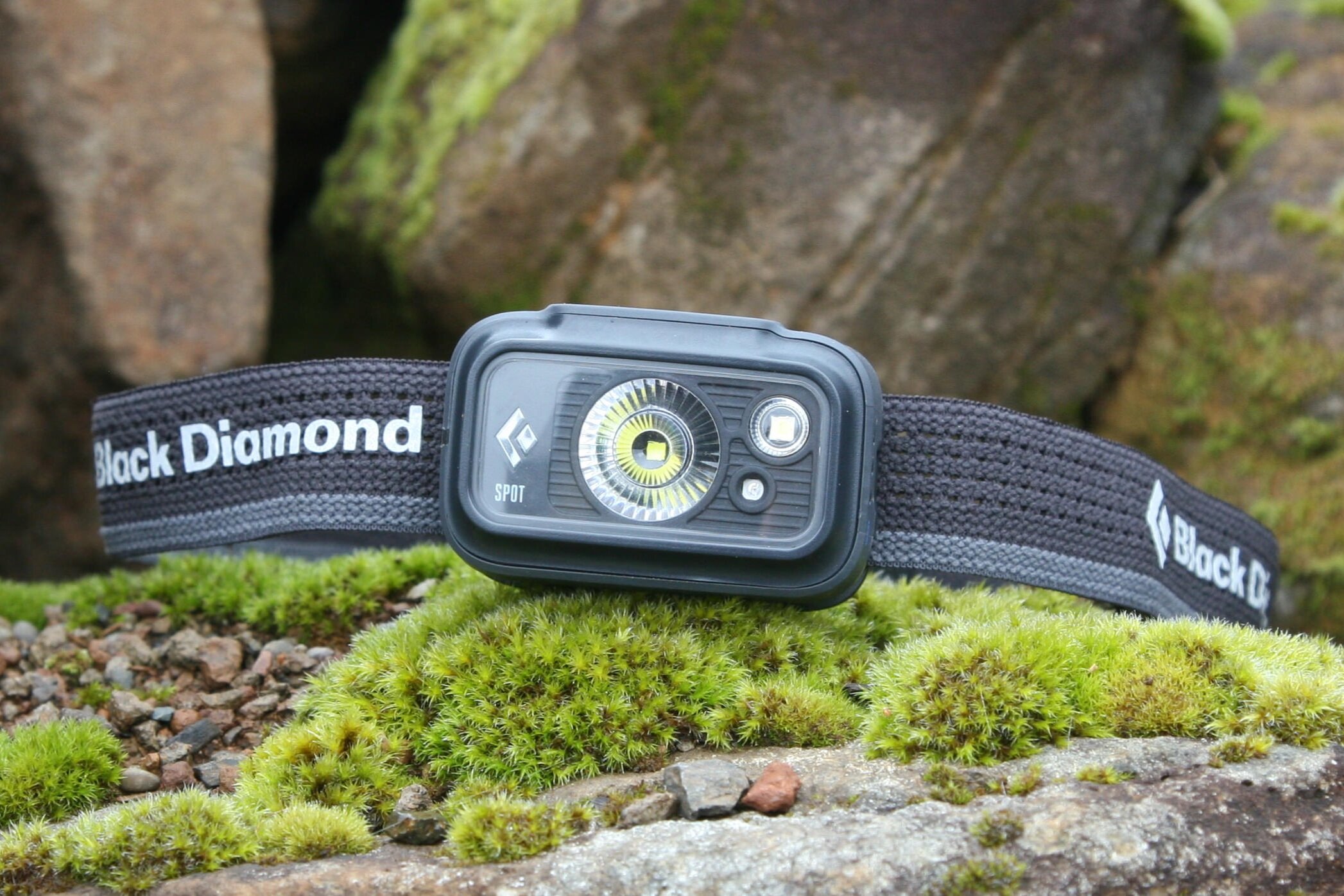
What’s Most Important to You in a Backpacking Tent?
PRICE
You don’t have to spend a lot to get a headlamp that works for simple tasks, like illuminating a backpacking tent at night, taking out the trash, or walking the dog. But if you plan to do any night-hiking or pre-dawn climbing it’ll likely be worth the extra cash to spring for a brighter model with a long-lasting battery.
Best budget headlamps
Best mid-range headlamps
Best mid-range headlamps
BRIGHTNESS
Lumens and beam distance are the most important spec that will help you determine how bright a headlamp is. Those who frequently hike at night will want a headlamp with a higher lumen count and longer beam distance. If you just need a headlamp for walking the dog or to keep in your car, a lower lumen count is typically more affordable and will likely work.
Brightest headlamps
RECHARGEABLE VS. NON-RECHARGEABLE
Rechargeables can be more convenient than carrying around extra batteries and they reduce waste, but they tend to have shorter burn times. Non-rechargeable batteries last longer for extended backcountry trips, but they cost more. You can always use rechargeable batteries in headlamps that take AAAs, but we usually prefer to go with regular Lithium batteries because they last longer.
Best rechargeable headlamps
Headlamps with the longest battery life
WEIGHT
Most backpacking headlamps are very lightweight nowadays, and pretty much any option you choose will make a negligible impact on your pack weight. Heavier headlamps – typically designed for climbing and caving – are often much brighter, more durable, and may have extra straps for a secure fit. Lights that fall into this category are overkill for backpacking in our opinion, and we recommend sticking with the lighter models on our list if you aren’t expecting to cave or climb.
Best ultralight headlamps
Best lightweight headlamps
- Black Diamond Spot 400-R
- Black Diamond Spot 400
- Fenix HM50R V2.0
- Petzl Actik CORE
- Petzl Tikkina
- Petzl Actik
- Princeton Tec Snap RGB
Best heavy-duty headlamp
Critical Headlamp Considerations
DURABILITY & WEATHER RESISTANCE
We look for headlamps that are made of quality materials that can stand some hard use. Manufacturers use an IP rating which is an international standard that tells us more specifically how protected electrical components are from water and dust.
For most hiking and backpacking we’re only concerned with our headlamp being weather-resistant enough to deal with some rain and ambient humidity (IPX4), however, extra water, dust, and shock-proofing are always good. If you need a completely waterproof headlamp look for a model with an IPX8 or IPX7 rating. IPX7 will be waterproof in one meter of water for 30 minutes, while the IPX8 can be submerged longer.
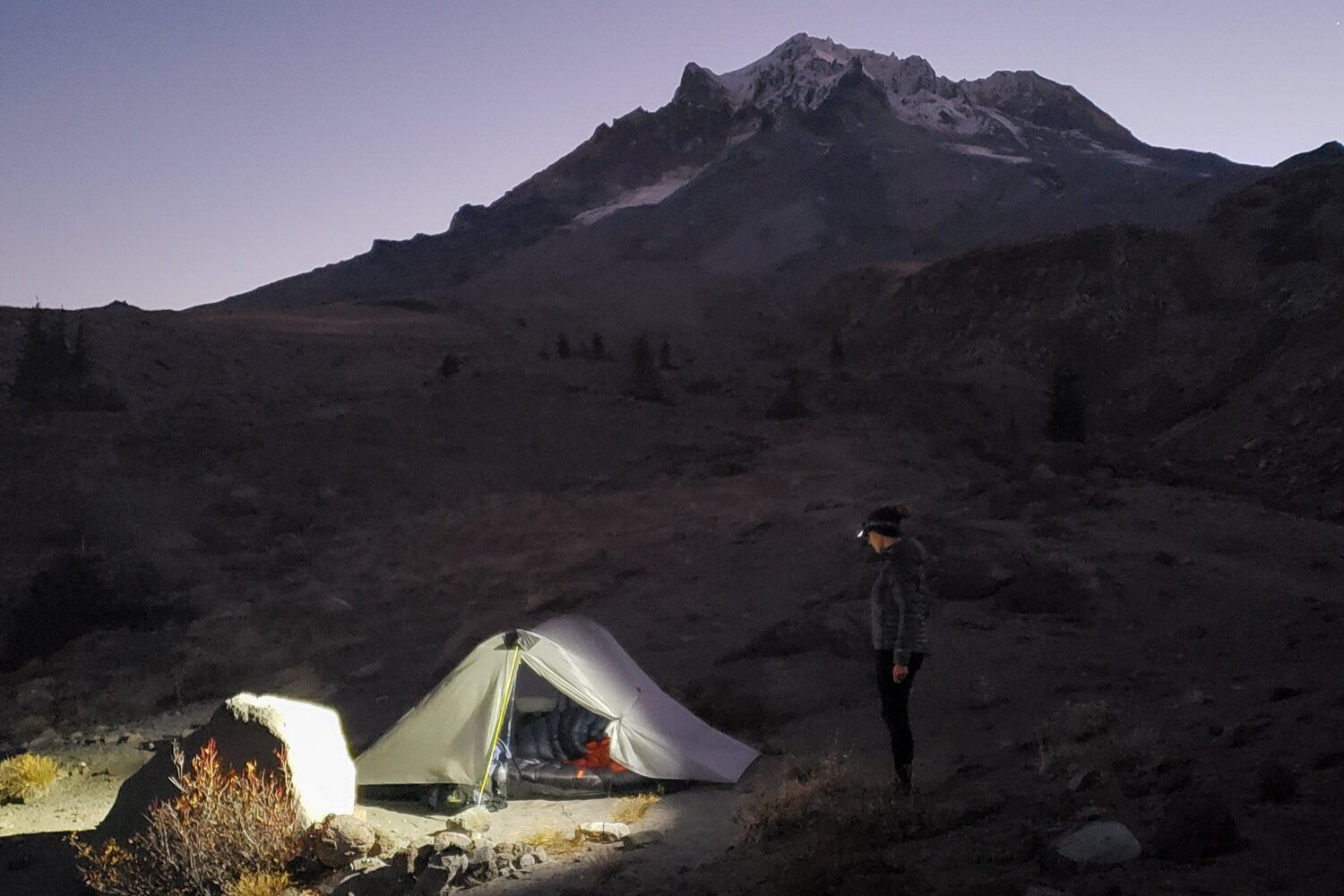
LUMENS
Lumens are a unit of brightness emitted from a light source. While it’s a somewhat helpful descriptor, the lumen measurement only factors in the total sum of light in any direction but not the quality of the beam pattern.
Two lights with the exact same lumens can have tremendously different light quality depending on the beam width and the optical quality of the lens system. After testing many headlamps, we have concluded that lumens alone are not a reliable way to compare performance and that beam distance and type are better indicators.
BATTERIES
- Rechargeables: Using a headlamp with rechargeable batteries reduces battery waste and can save you money over time, but they tend to have shorter burn times. Rechargeables are great for everyday use, running, and short trips when you can charge them easily and often. For extended backcountry trips, you’ll have to carry cords and a power bank. Note: Most headlamps that take regular batteries can be made rechargeable by using rechargeable batteries like the Eneloop AAAs. However, this may reduce the overall burn time significantly. We put Eneloop rechargeables and Li-ion AAAs head-to-head and tested them in two Petzl Actik headlamps. The Eneloops kept up surprisingly well for the first few hours, but in the end the non-rechargeables lasted many hours longer.
- Availability: For thru hikes, it’s a good idea to choose a headlamp that uses batteries that are easily accessible. Coin batteries are lightweight, but uncommon in stores.
- Alkaline vs. Lithium: If your headlamp uses traditional AA or AAA batteries, you may be able to upgrade to Lithium for a longer burn time, better efficiency in extreme temperatures, and less weight. Lithium, a particularly light metal, has the highest energy density of all battery cells and is approximately 30% lighter than alkaline batteries of the same size. Lithium batteries are best for high or moderate-drain headlamps, but can be too powerful for some low-drain models. We suggest reading the manufacturer instructions for battery recommendations for your specific headlamp to see if you can take advantage of the benefits of lithium.

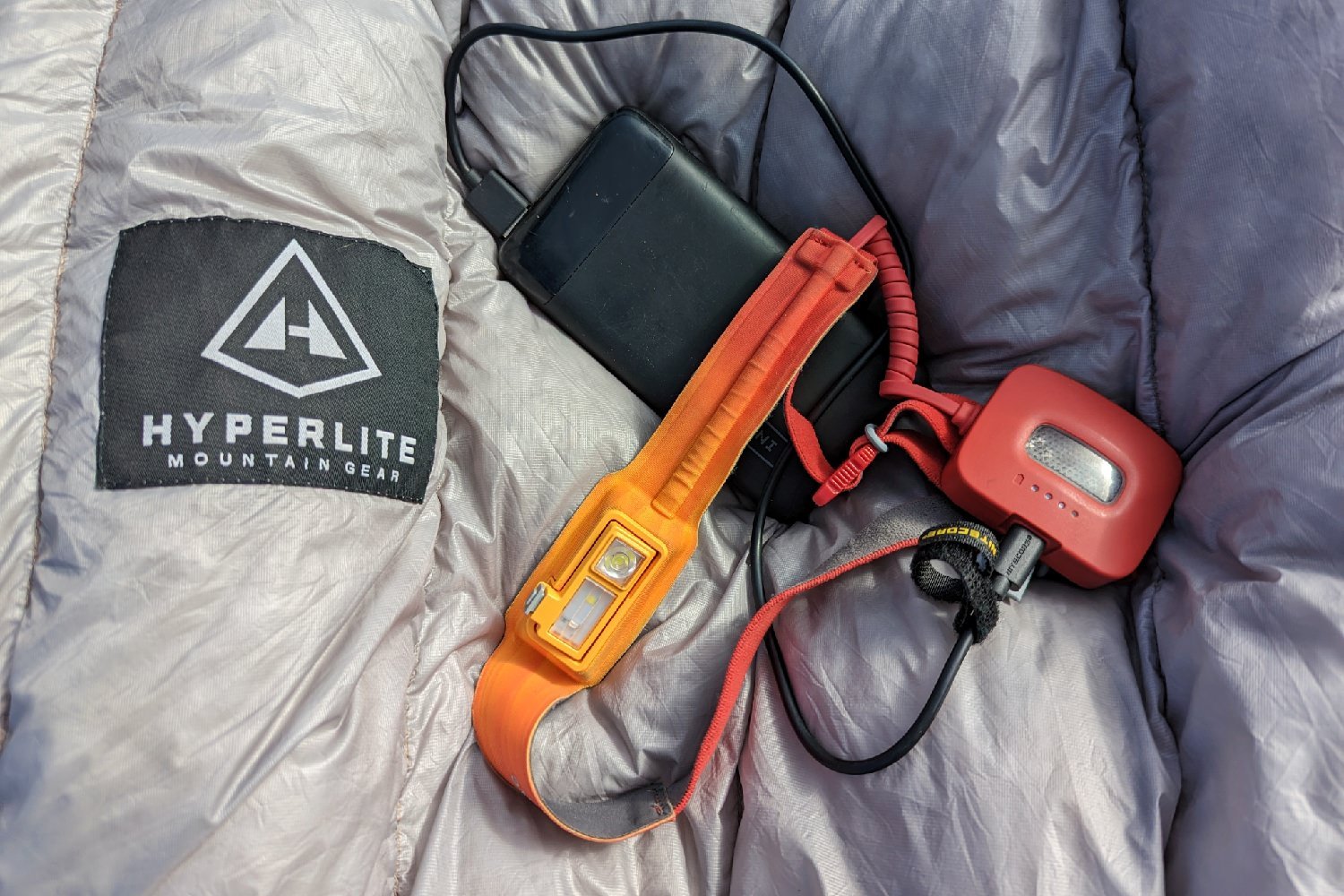
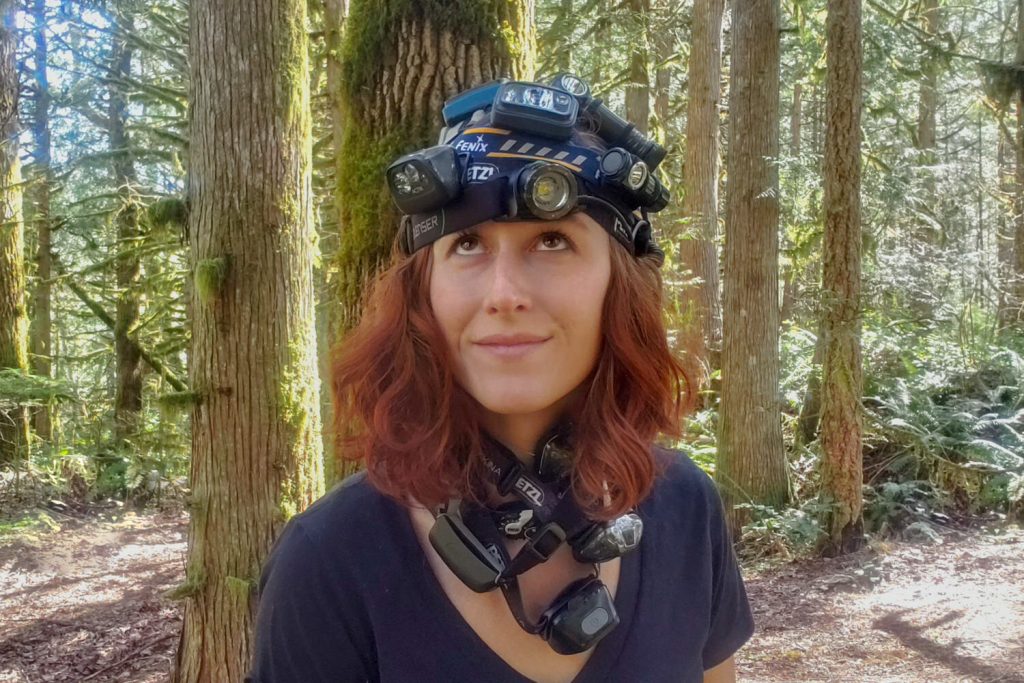
BURN TIME (BATTERY LIFE)
Burn time is the amount of time the battery will be able to sustain the light without recharging or changing batteries. Often, the burn time is far greater if you switch to your low setting whenever possible.
LIGHT MODES
Depending on your chosen activity, certain light modes will suit the situation best.
- Red Light: Uses very little energy and does not cause your pupils to dilate at night. This mode is great for camp chores and does not attract flying insects like white light. It’s less disruptive to groups, tentmates, and camp neighbors.
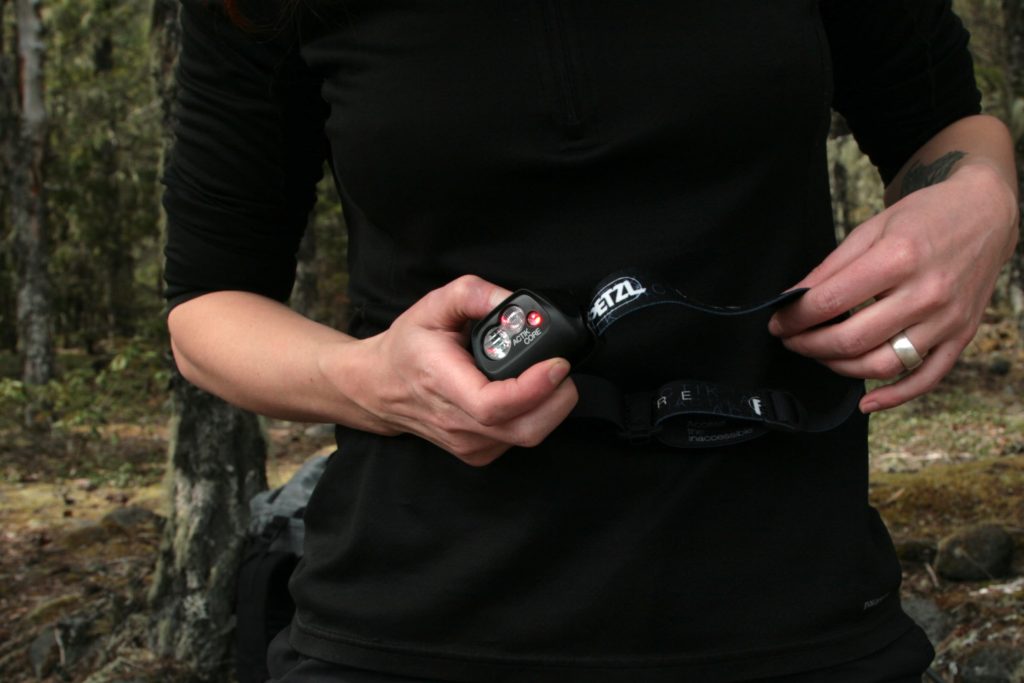
- Strobe: This mode makes you visible when hiking, biking, or running along roadsides, and can be used as a signal in emergency situations.
- High: The bright, focused high beam is good for night hiking on tricky terrain, looking for trail signs, spotting climbing anchors, or using as a bike headlight.
- Low: Low mode is also called ‘proximity mode.’ It conserves battery power and produces a wider beam of softer, dimmer light usually directed downwards to see nearby objects. We use this mode for cooking in camp, setting up tents, familiar night hikes, etc.
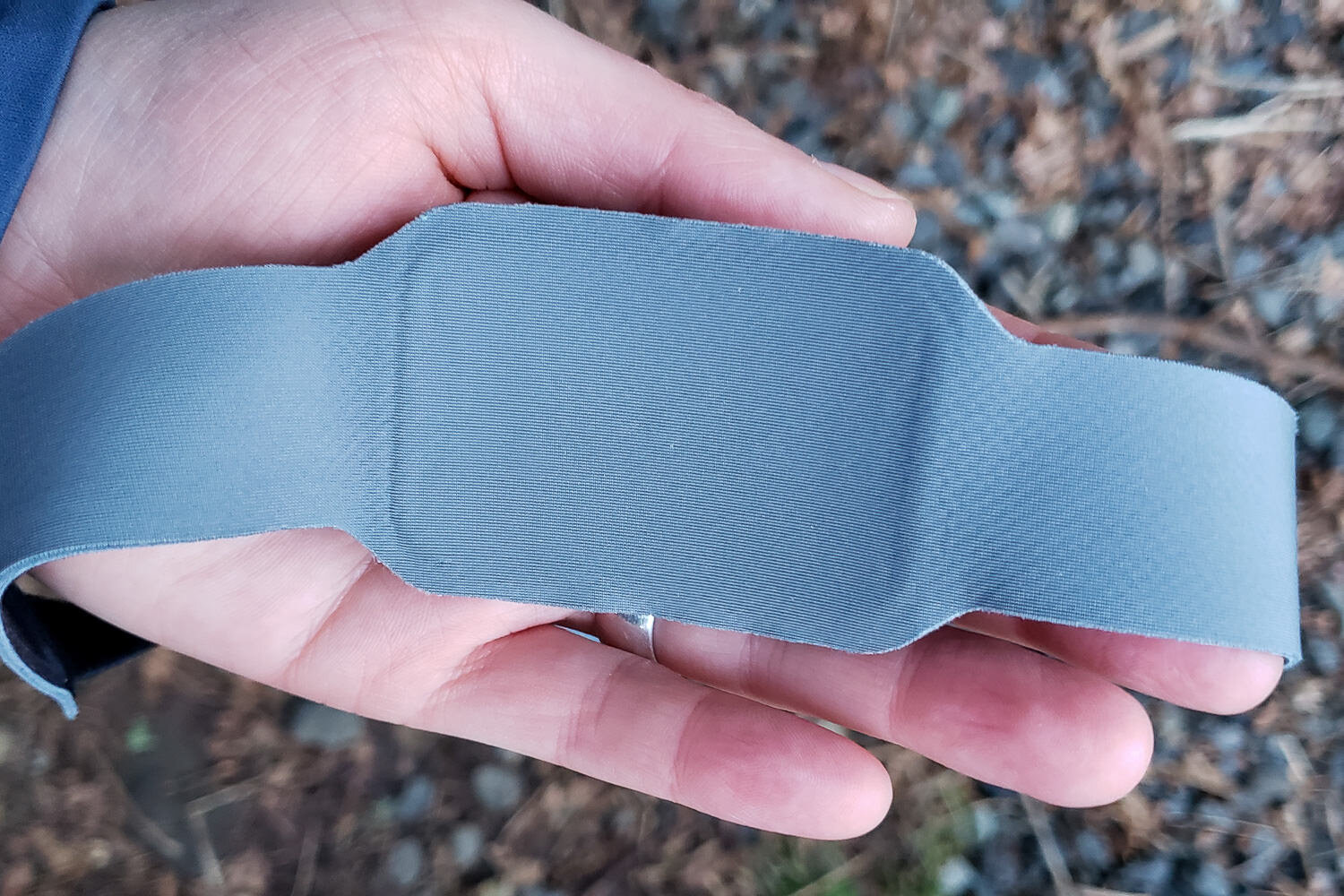
COMFORT
A well-designed lamp should have the strap adjustments necessary to secure the light snugly without putting too much pressure on your forehead. Some headlamps distribute the weight between the front and the back for better balance and less bouncing. This is especially important for runners or for those who choose a lamp with a larger battery pack. The band should be made of a durable but soft wicking fabric, and adjusters should not slip or loosen on their own.
SIMPLICITY
If you love techy gadgets and versatility, you might opt for a lamp with more features like the Black Diamond Spot. But for those who just need a light for simple tasks, the Petzl Tikkina or Actik might be best. For winter sports where gloves are required, choose a headlamp with a single large button.
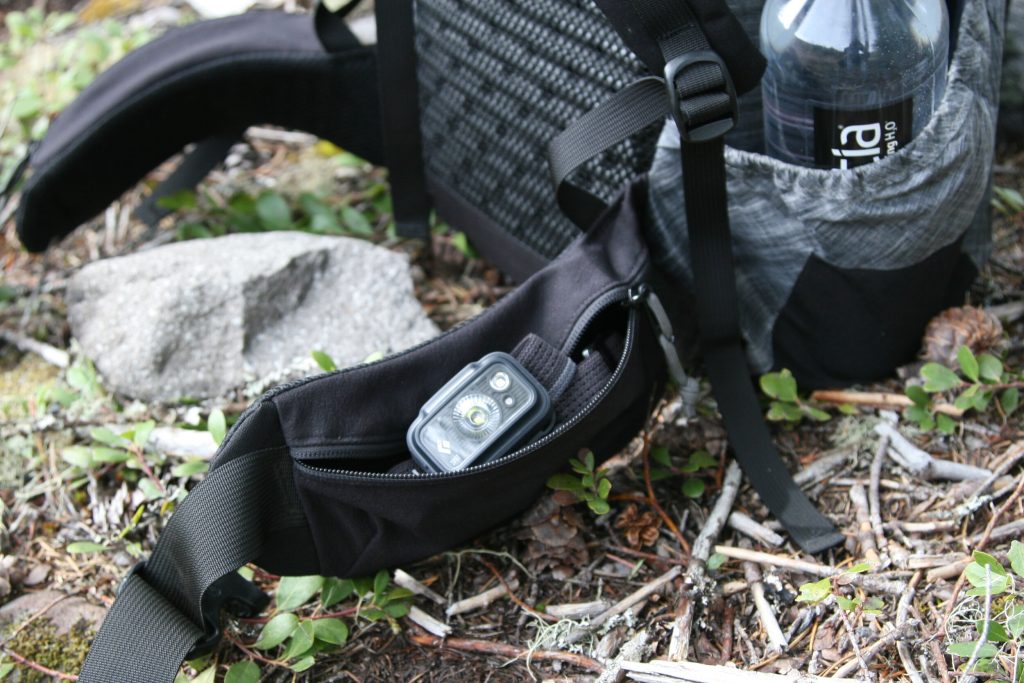
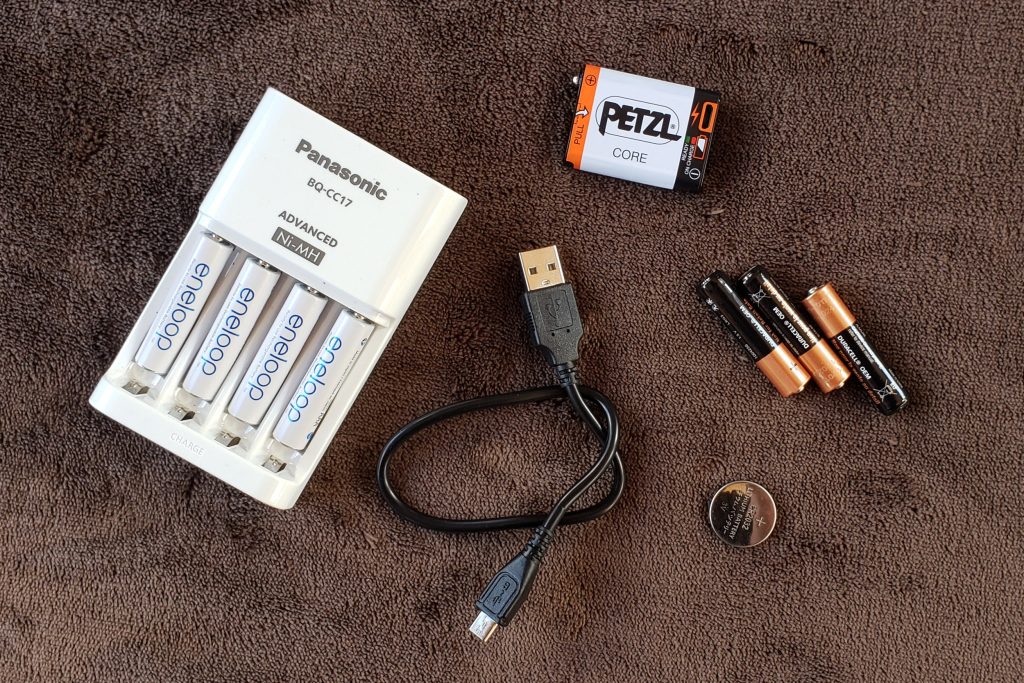
HAVE BACKUP
Always top up your charge or replace your batteries before you leave home. For long trips, it’s very wise to think about what you’ll use as a backup light if your headlamp should fail in the field. Most of us will have a smartphone that’s equipped with a flashlight, and that will cover your butt. But if you don’t, consider carrying a small, ultralight backup like the Photon Micro Light or Petzl e+Lite.
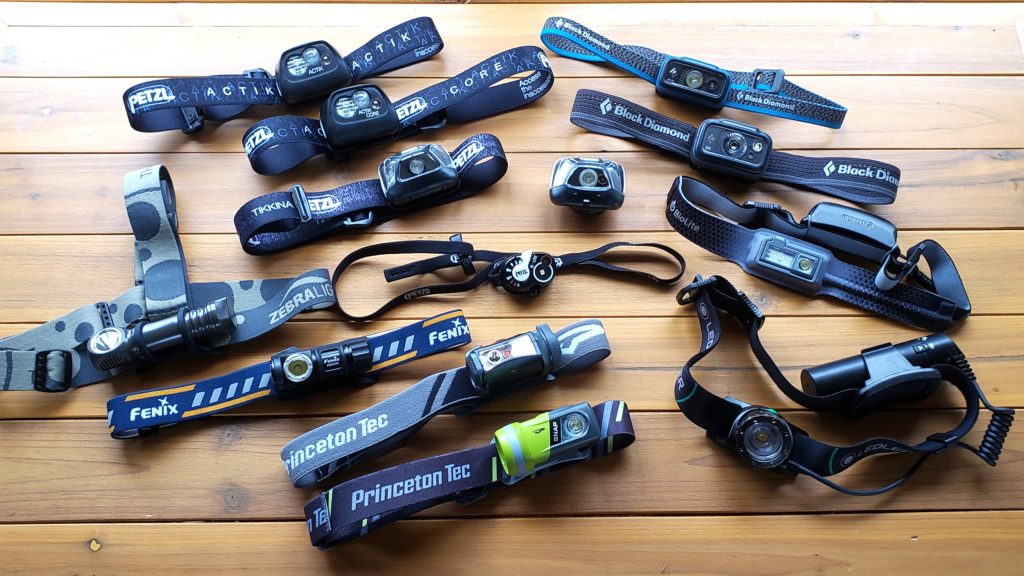
Honorable Mentions
The following headlamps didn’t make our final list, but they’ve still got a lot of good things going for them. You never know, one of these headlamps might be perfect for you:
Black Diamond Spot Lite 200 – This headlamp has most of the features of the popular Spot 400, but it’s a bit lighter and more compact. It’s a high-quality, affordable option and very comfortable on the forehead. Though the two-AAA-battery system of the Spot Lite 200 limits its burn time and max output, we still find that it works great for the most common uses on trail.
Petzl e+LITE – A fine choice as a backup or emergency light source, but it’s too dim for use as a primary headlamp in our opinion. It could work for ultralight backpackers who rarely use headlamps, but don’t expect to feel confident doing any nighttime activities with the e+LITE.
Princeton Tec Sync – This is a decent headlamp for those who want good features on a tight budget. The rotating mode selector is simple and straightforward to use, but requires two hands to adjust since the entire lamp wants to twist as you turn the selector knob.
